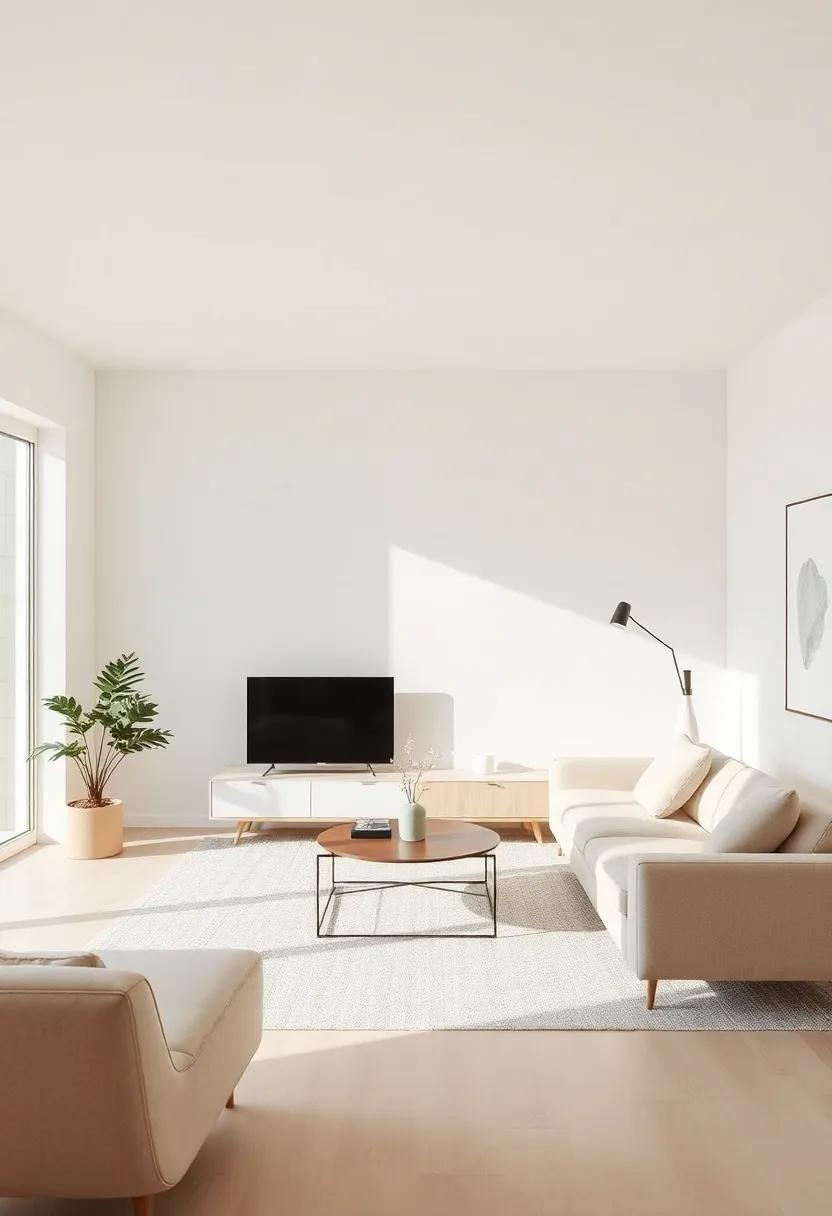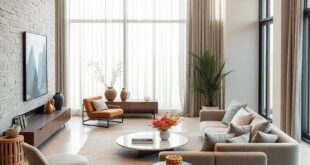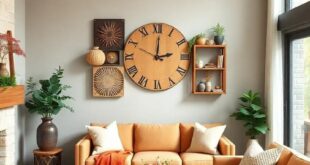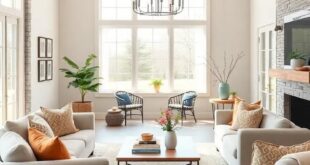In an age where urban landscapes and compact living spaces are becoming the norm, the art of designing a small living room has taken on new meaning. Embracing space has evolved beyond merely making do; it invites us to reimagine our environments and cultivate a sense of serenity amidst the hustle and bustle of everyday life. This article delves into the innovative minimalist approaches that transform these cozy corners into sanctuaries of style and functionality. By stripping away the superfluous, we can focus on the essentials—thoughtfully curated pieces that enhance both aesthetic appeal and livability. Join us as we explore the principles of minimalist design, revealing how to balance utility and beauty in even the smallest of living rooms.
Exploring Open Floor Plans That Maximize Natural Light and Space
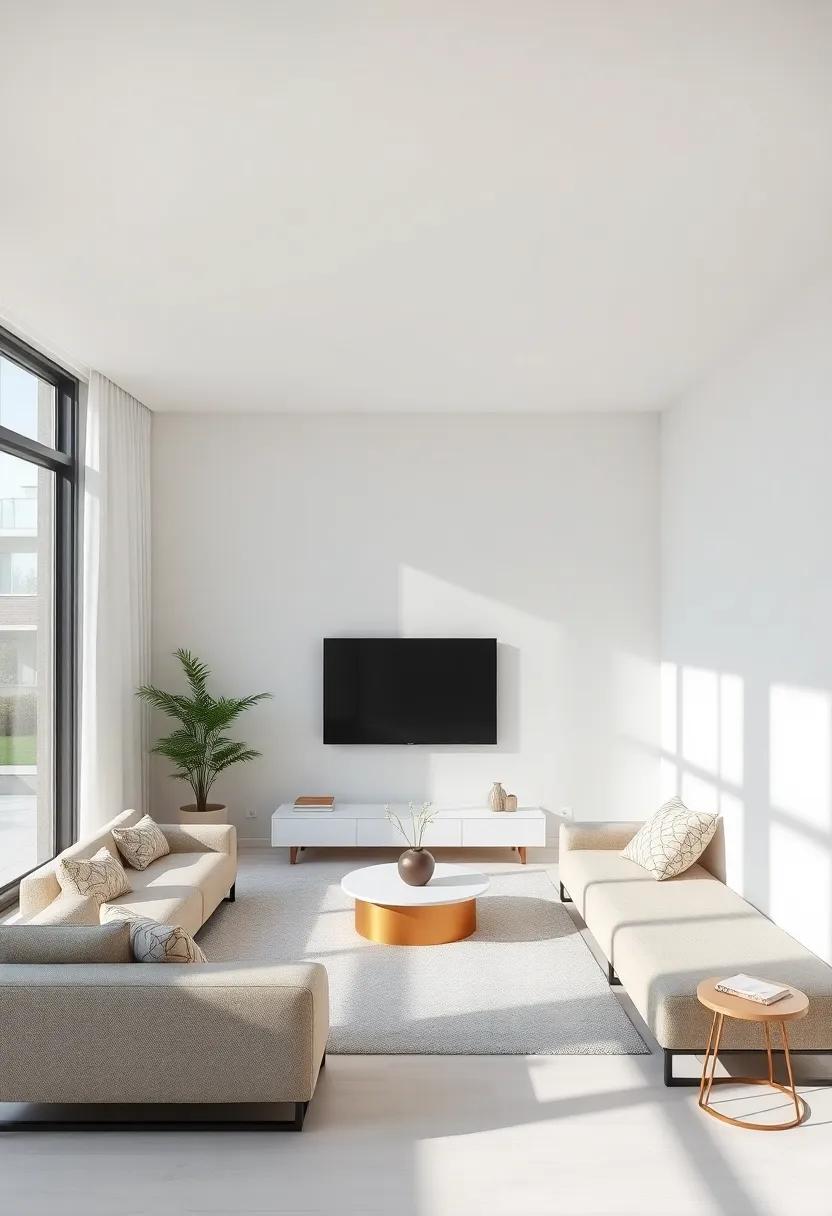
In the realm of modern design, the emphasis on an open floor plan transcends mere aesthetics; it creates a harmonious flow of light and air that elevates the entire ambiance of a small living room. Large windows and sliding glass doors become the defining features, allowing natural light to flood the space and create an illusion of depth. By integrating translucent room dividers, such as frosted glass panels or lightweight curtains, homeowners can delineate areas without sacrificing luminosity or openness. The strategic placement of mirrors also plays an essential role, reflecting light and visually expanding the area, ultimately contributing to a serene, minimalist atmosphere.
To further enhance the usage of space and light, consider incorporating multi-functional furniture that prioritizes simplicity without compromising on style. Foldable tables and modular seating arrangements can adapt to various activities, from quite evenings to social gatherings.Light,neutral color palettes paired with bold accents can emphasize the expansive feel,while carefully chosen decor items—such as hanging plants or abstract art—further enrich the environment. Below is a brief overview of essential elements to explore in designing your small living room:
| Element | Function |
|---|---|
| Large Windows | Maximize natural light and outdoor views |
| Translucent Dividers | create space zones while allowing light flow |
| Mirrors | Reflect light and create an illusion of depth |
| Multi-Functional Furniture | Maximize usability and adaptability in small spaces |
| Light Color Palettes | Enhance openness and brightness in the room |
Utilizing Multi-Functional Furniture to Enhance Comfort and Utility
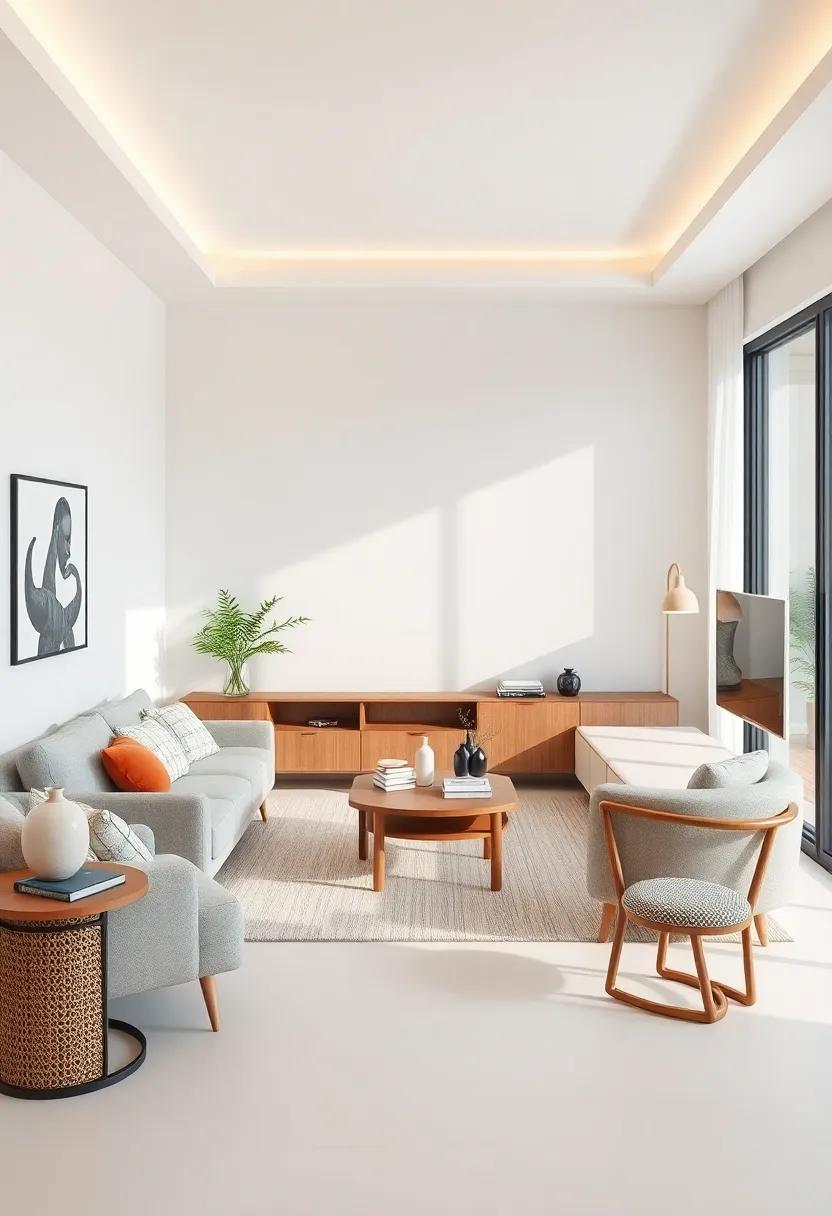
In a small living room, every square inch counts, and multi-functional furniture can play a pivotal role in maximizing space without sacrificing style or comfort. Consider investing in pieces that serve more than one purpose; such as, a sturdy coffee table that can transform into a dining table or an ottoman that doubles as storage. These smart additions not only streamline the aesthetic but also enhance practicality, allowing for seamless transitions between relaxation and functionality. Among popular choices are:
- Sofas with Hidden Storage: Perfect for stowing away blankets or books.
- Murphy Beds: A classic choice, providing a comfortable sleeping area without consuming valuable floor space when not in use.
- convertible Chairs: These can easily shift from a lounge chair to a bed for guests.
Incorporating stylish finishing touches can elevate the experience of multi-functional furniture.think about layering textures and hues that complement your chosen pieces, ensuring they enhance rather than overpower your living space. A well-placed area rug can define cozy zones in an open layout, while decorative trays can organize and beautify surfaces. Here’s a simple comparison of furniture pieces that seamlessly blend comfort with utility:
| Furniture Piece | Functionality | Benefits |
|---|---|---|
| Storage Ottoman | Seating + Storage | Helps keep clutter at bay, adds footrest |
| Wall-Mounted Desk | Workstation + Decorative Display | Maximizes floor space, can be folded away |
| Convertible Sofa | Sofa + bed | Comfortable seating that turns into a guest bed |
Incorporating Smart Storage Solutions for Clutter-Free Living

in today’s fast-paced world, finding a harmonious balance between functionality and aesthetics is crucial for small living spaces. By integrating innovative storage solutions, you can maximize available space and maintain an organized environment. Consider multifunctional furniture that not only serves as seating or tables but also conceals storage within. some effective options include:
- Ottomans with hidden compartments - perfect for blankets and magazines.
- Wall-mounted shelves – utilizing vertical space can display art while keeping surfaces clear.
- Expandable dining tables – allow for flexibility on occasions without sacrificing day-to-day space.
Incorporating smart organizational systems can also be aesthetically pleasing. Implementing storage baskets and decorative boxes can help maintain a clean look while also being functional. Using corner nooks for shelving or foldable furniture can effectively prevent clutter from invading the living area. Here’s a fast overview of stylish storage solutions:
| Storage Solution | benefits |
|---|---|
| Floating Shelves | Maximize wall space without taking up floor area. |
| Storage Benches | Serve as seating while providing hidden storage. |
| Under-bed Storage | Utilize often-overlooked spaces for seasonal items. |
The Art of Selecting a Cohesive Color Palette to Enhance Visual Space
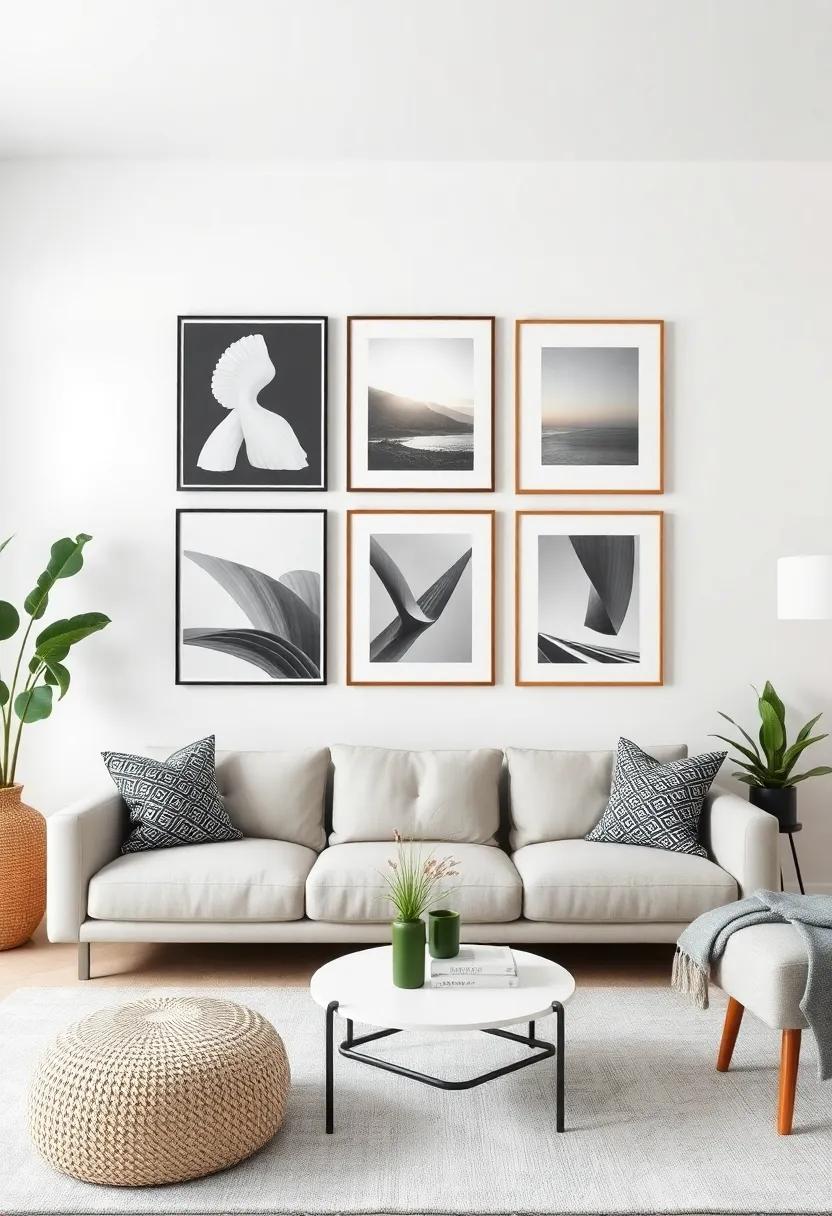
When curating a color palette for a small living room, it’s essential to embrace hues that work synergistically to create an illusion of space. Opting for soft, muted tones can enlarge the visual perception of your area.Rather of jarring contrasts, think about using shades from the same family, such as:
- Pale blues that evoke tranquility
- Warm beiges for a welcoming touch
- Soft grays to add depth
Additionally, incorporating accent colors can add character without overwhelming the senses. Use these sparingly in accessories or artwork,ensuring they echo the primary palette for a unified look. A well-thought-out color scheme might include:
- Deep navy for striking cushions
- Gentle greens in decorative plants
- Textured whites in linens for crisp contrast
To visualize how colors interact, consider using a simple color table to evaluate how different shades can be paired effectively:
| Color | Mood | Ideal Usage |
|---|---|---|
| Light sand | Warmth | Wall paint |
| Mint Green | Refreshment | Accent decor |
| Plum | Luxury | Throw pillows |
Creating Zones with Area Rugs to Define Functionality in Small Rooms
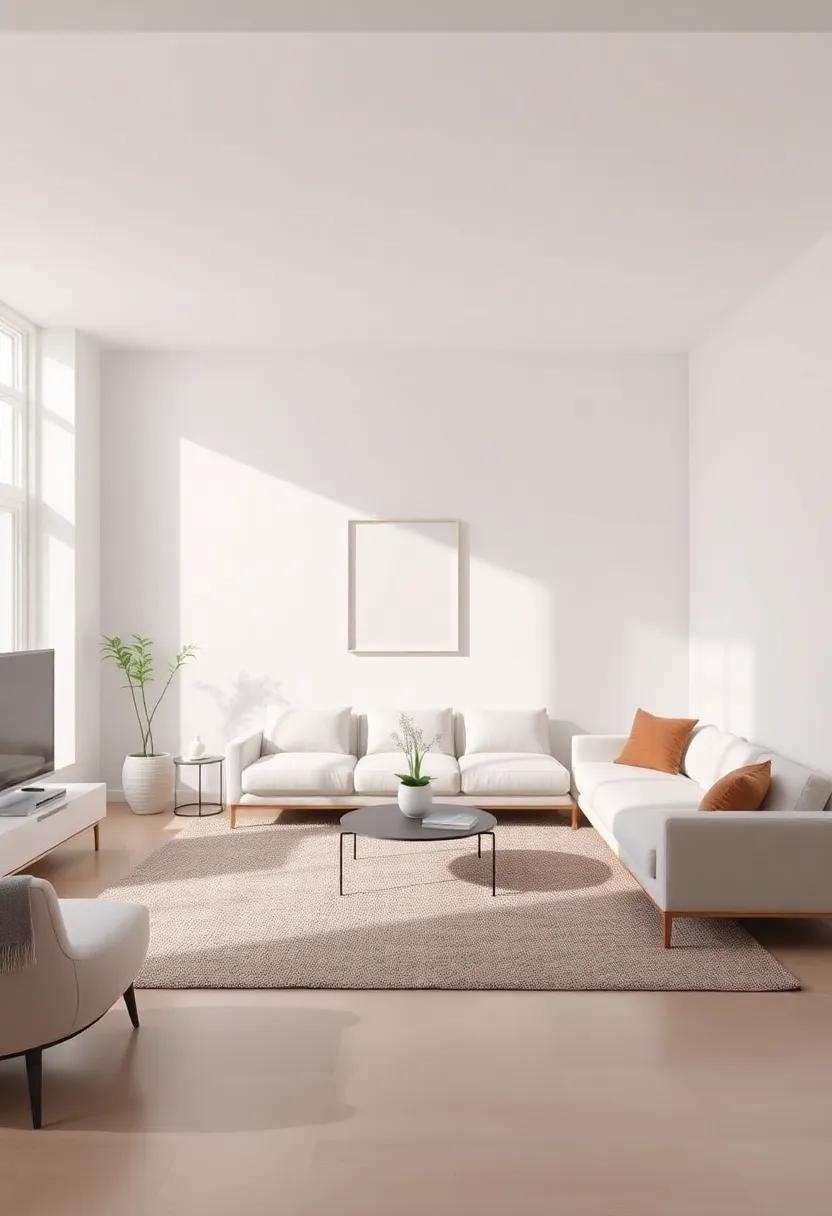
In small living spaces, area rugs serve as fantastic tools to establish distinct zones, enhancing both aesthetics and functionality. By strategically placing rugs, you can create a visual division that directs activities and interactions, making the space feel larger and more organized. Consider using a larger rug to anchor the living area, providing a cozy foundation for seating arrangements. Meanwhile, a smaller, patterned rug can define a reading nook or workspace, introducing a playful contrast. This layering technique not only adds depth but also helps maintain fluidity and warmth throughout the room.
When selecting area rugs, opt for materials and colors that complement your overall design scheme. Here are some tips to keep in mind:
- Choose rugs that offer texture to invite touch and warmth, such as wool or cotton.
- Incorporate bold patterns or colors to add character without overwhelming small spaces.
- Select rugs that fit underneath your furniture to unify different areas.
Additionally,a careful arrangement can definitely help maximize the visual impact. Consider this layout options table for inspiration:
| Zone | Rug Size | Suggested Material | Color Style |
|---|---|---|---|
| Living area | 8×10 ft | Wool | Neutral tones |
| Reading nook | 4×6 ft | Cotton | bold patterns |
| Workspace | 3×5 ft | Polyester | Muted colors |
Showcasing Vertical Space with Shelving and Decorative Elements
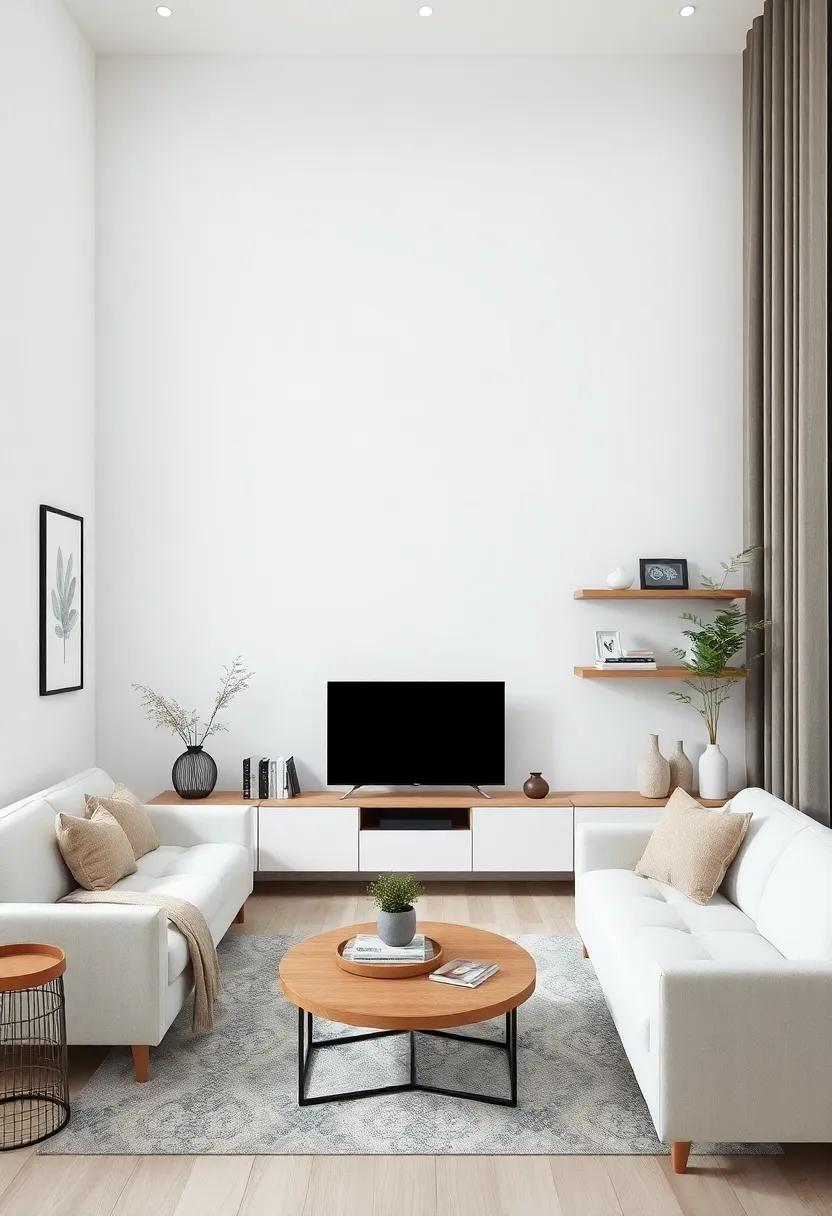
Transforming a small living room often rests on the power of vertical space. By installing shelving units that scale upward, you draw the eye towards the ceiling, creating an illusion of height and spaciousness. Choose open shelves to maintain an airy feel while organizing your favorite books, plants, and personal treasures. Incorporate a variety of decorative elements for visual interest,such as:
- Framed artwork that adds personality
- Succulents for a touch of nature
- Stylish boxes to keep clutter at bay
- Elegant vases filled with seasonal flowers
Consider a multifunctional shelving unit that can also serve as a room divider,creating distinct areas within your small living room. A well-placed wall shelf can introduce depth while displaying a curated collection of items.To achieve a cohesive look, think about a color palette that complements your existing decor, and use different heights to build dimension. A striking combination of textures,from smooth wood to textured ceramics,can enhance the overall aesthetic while keeping the space uncluttered.
Balancing Minimalism and Warmth Through Thoughtful Textures
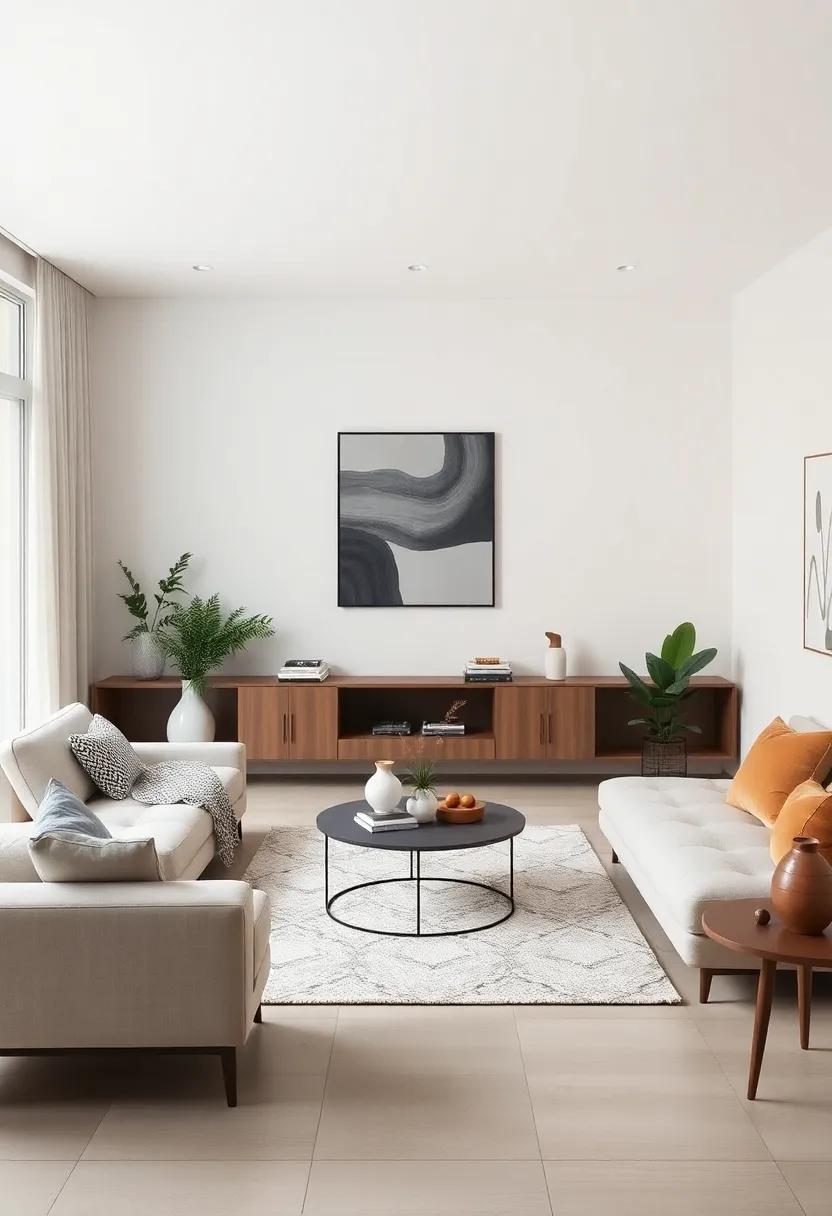
In a minimalist living room, stark and bare elements can sometimes feel cold and uninviting. To counterbalance this, incorporating a variety of textures can infuse warmth and personality into the space. Consider layering soft textiles, such as:
- Cozy throw blankets on a sleek sofa,
- Woven baskets for stylish storage,
- Textured cushions that add depth to your seating area.
These thoughtfully chosen materials can create an inviting atmosphere while still adhering to the simplicity that defines minimalist design. Additionally, incorporating natural elements like wood or stone can further enrich the tactile experience of the room. As a notable example, a wooden coffee table can serve as a centerpiece, offering both functionality and organic texture, while:
| Material | effect |
|---|---|
| Wool | Cozy warmth |
| Linen | Casual elegance |
| Ceramics | Earthy charm |
Incorporating these materials into your design not only softens the visual appeal but also adds a layer of comfort that invites relaxation and connection.
Selecting the Right Scale of Furniture for an intimate living Space
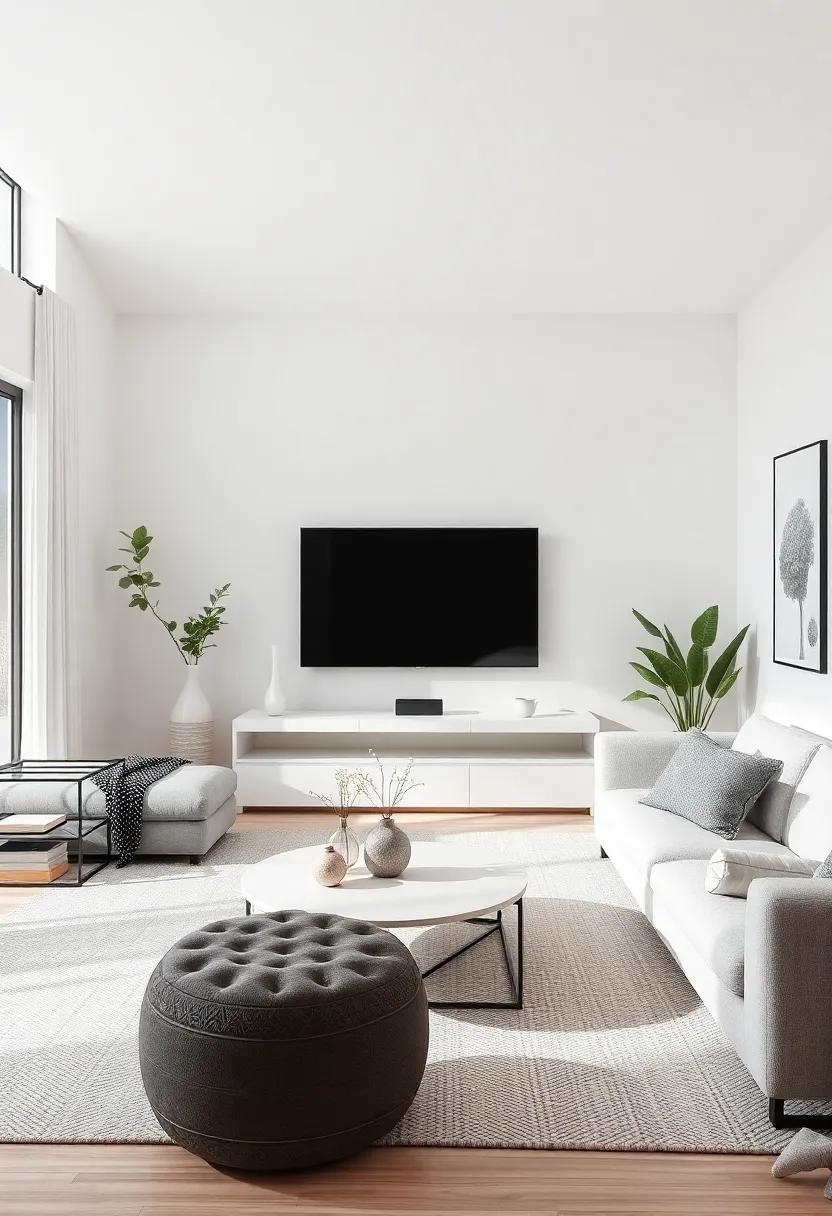
In a cozy living space, the scale of your furniture plays a pivotal role in ensuring both aesthetics and functionality. To achieve balance, prioritize proportional sizing that complements the dimensions of the room. Rather of opting for bulky sofas and oversized coffee tables, consider sleek designs that enhance the visual flow. As an example,a low-profile sofa can create an illusion of more space,while a round coffee table can promote easier movement. When selecting seating, look for multi-functional pieces like ottomans with storage or side tables that can double as extra seating during gatherings.
Be mindful of feature furniture, which can serve as a statement piece without overwhelming your intimate setting. A slim console table against a wall or a floating shelf can display decor without occupying floor space. Here are some insight tips to help navigate your selection:
- Choose lightweight materials: Opt for items made from materials like wood,acrylic,or metal that won’t visually clutter the room.
- Incorporate vertical elements: Tall bookshelves or wall-mounted decor draw the eye upward, creating an illusion of height.
- Mix and match: A combination of upholstered pieces with metal or glass elements can add depth while maintaining a light feel.
innovative Lighting Solutions that Brighten and Expand Perceived Space
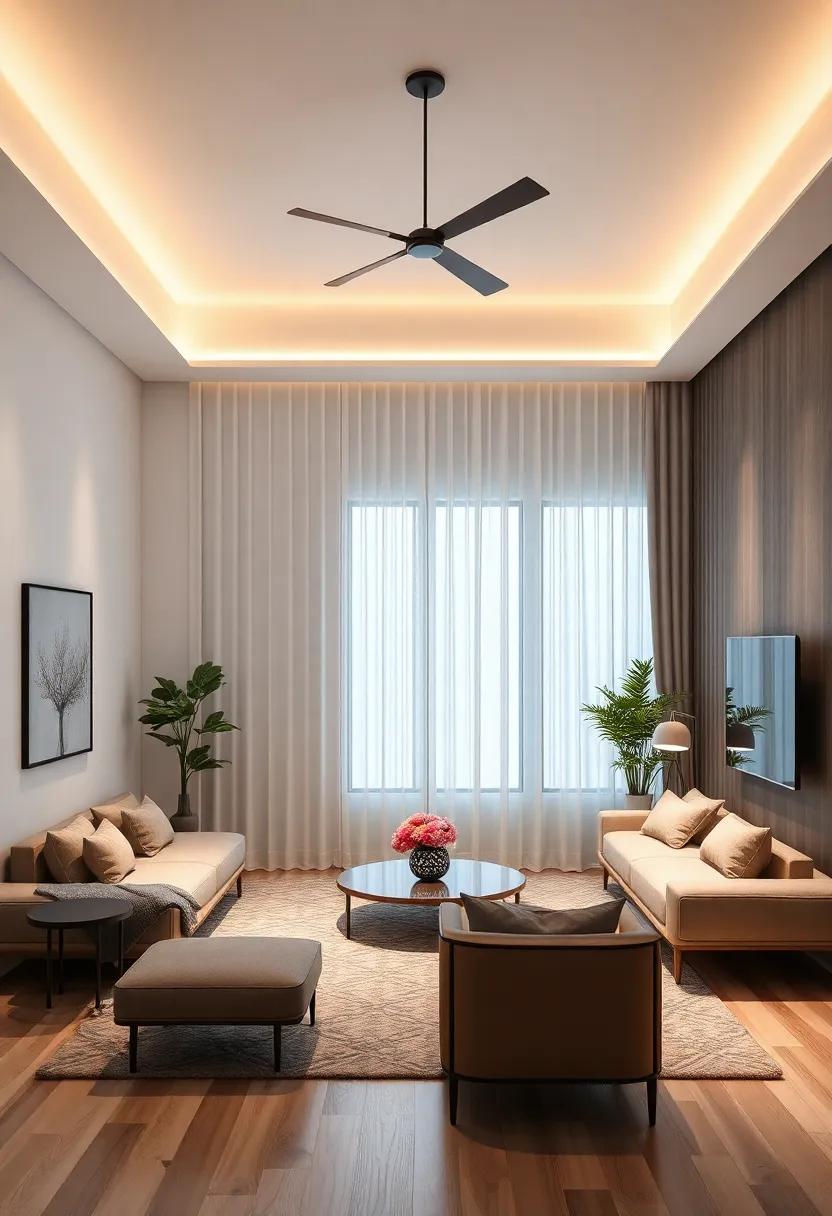
Effective lighting can dramatically change the ambiance of a small living room, creating a sense of openness while addressing the limitations of compact spaces. By utilizing layered lighting techniques, you can enhance vertical height and broaden the overall feel of the room. Consider incorporating:
- Ambient Lighting: Soft, diffused lights that fill the room, such as ceiling fixtures or wall sconces.
- Task Lighting: Focused bulbs like table lamps or floor lamps that illuminate specific areas for reading or working.
- Accent Lighting: Highlighting architectural features or decor with strategically placed LED strips or spotlights.
Another remarkable method to employ is the use of mirrors, reflective surfaces, and light colors in conjunction with your lighting choices.When paired with fixtures that have adjustable brightness,these elements can create an illusion of spaciousness. Below is a simple guide for selecting optimal lighting styles and colors:
| Lighting Type | recommended Color Temperature | Ideal Placement |
|---|---|---|
| Ambient | Warm White (2700K-3000K) | Ceiling Center |
| Task | Neutral White (3500K-4000K) | Reading Areas |
| Accent | Cool white (5000K-6500K) | Artwork or Shelves |
Integrating Greenery for a Fresh and Inviting Atmosphere
Incorporating plants into a minimalist living space not only enhances the aesthetic but also promotes a sense of tranquility and vitality. Choose a variety of greenery that complements your existing color palette and style. Consider options like:
- Spathiphyllum (Peace Lily) – Perfect for low-light areas with its elegant blooms.
- Sansevieria (Snake Plant) – A resilient choice that adds vertical interest.
- Pothos – Ideal for hanging arrangements, cascading beautifully from shelves.
Grouping plants together can create a mini indoor oasis, drawing the eye and creating depth. A strategic placement on floating shelves or in decorative pots adds layers while maintaining a clean look.Utilize natural materials such as rattan or wood for planters, enhancing the organic feel. For a polished touch, consider a chic terrarium or a small tabletop arrangement, which adds a pop of greenery without overwhelming the space.
Personalizing Your Space with Subtle Decorative Touches
To transform your small living room into a personalized haven, consider incorporating subtle decorative touches that reflect your personality and interests. Start by selecting a few key accents that showcase your style, such as:
- Artistic prints or framed photographs that evoke memories or inspire creativity.
- Unique plants, like succulents or hanging greenery, which introduce life and warmth while maintaining a minimalist aesthetic.
- Textiles, including throw pillows and soft blankets, that add texture and comfort without overwhelming the space.
To enhance the ambiance further, focus on the lighting in your living room. A carefully chosen lamp can serve as both a functional element and a decorative piece. Explore different options, such as:
- Table lamps with sleek designs that draw attention without cluttering the surface.
- Wall sconces that save floor space and provide subtle illumination for a cozy atmosphere.
- Fairy lights or LED strips that offer a touch of whimsy and can be integrated into shelving or around windows.
The Role of Mirrors in Creating Illusions of Depth and Space
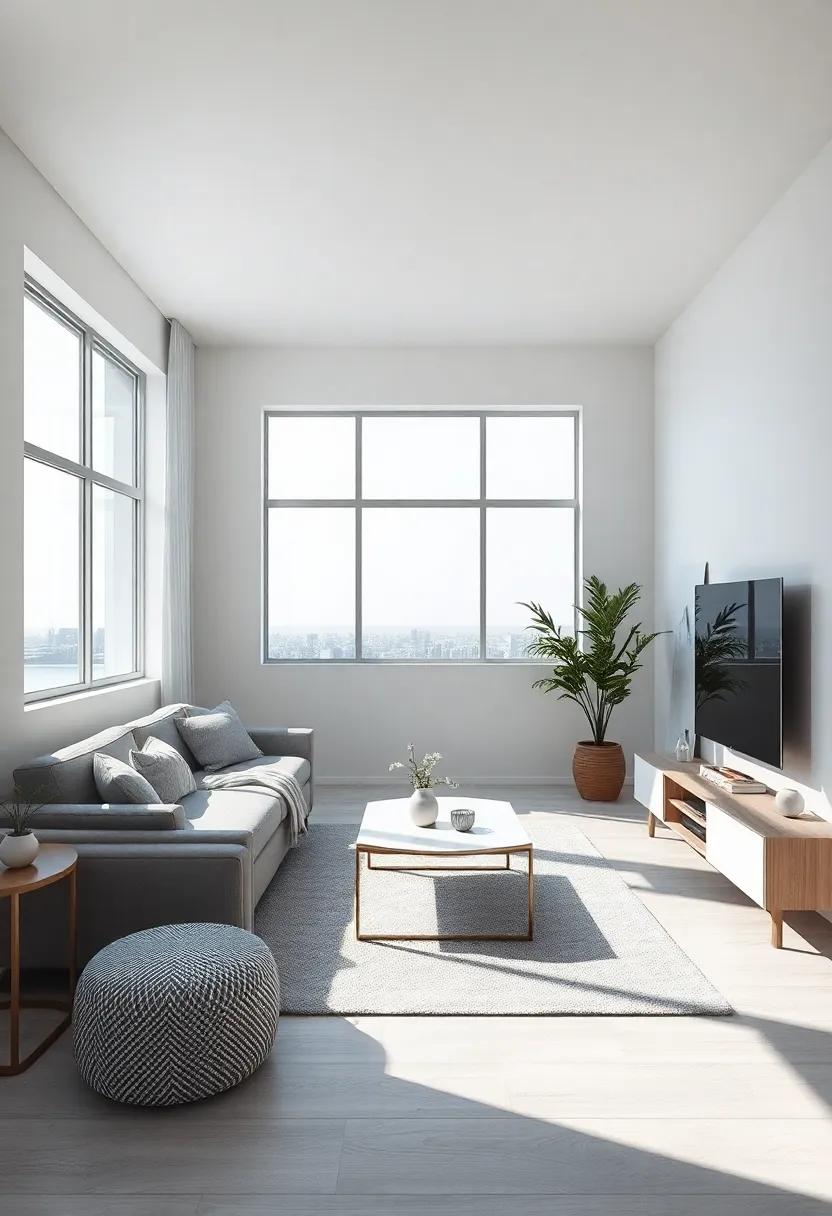
Mirrors possess an extraordinary ability to transform a small living room, enhancing both depth and spatial perception. By strategically placing mirrors on walls, you can create a sense of expansiveness that draws the eye outward, making the space feel larger than it actually is.Consider these key strategies for utilizing mirrors effectively:
- Wall Size: Choose larger mirrors to fill an entire wall,maximizing reflective surface area.
- Placement: Position mirrors opposite windows or light sources to amplify natural light and create a postcard view of the outdoors.
- Layering: Incorporate mirrors among decor elements, such as artwork or plants, to offer layers and visual interest.
Along with size and placement, the shape and style of mirrors can also significantly contribute to the ambiance of your living room. For a softer,cozier vibe,consider round or oval mirrors that introduce organic shapes. Conversely, geometric, angular mirrors can complement a modern minimalist decor. Here’s a simple comparison table highlighting mirror styles and their effects:
| Mirror Style | visual effect |
|---|---|
| Round | Softens corners; adds warmth |
| Rectangular | Enhances linear space; balances elements |
| Geometric | Creates modern allure; adds visual intrigue |
| Antique | Incorporates charm; evokes nostalgia |
Crafting a serene Ambiance Using Soft Fabrics and Design Elements
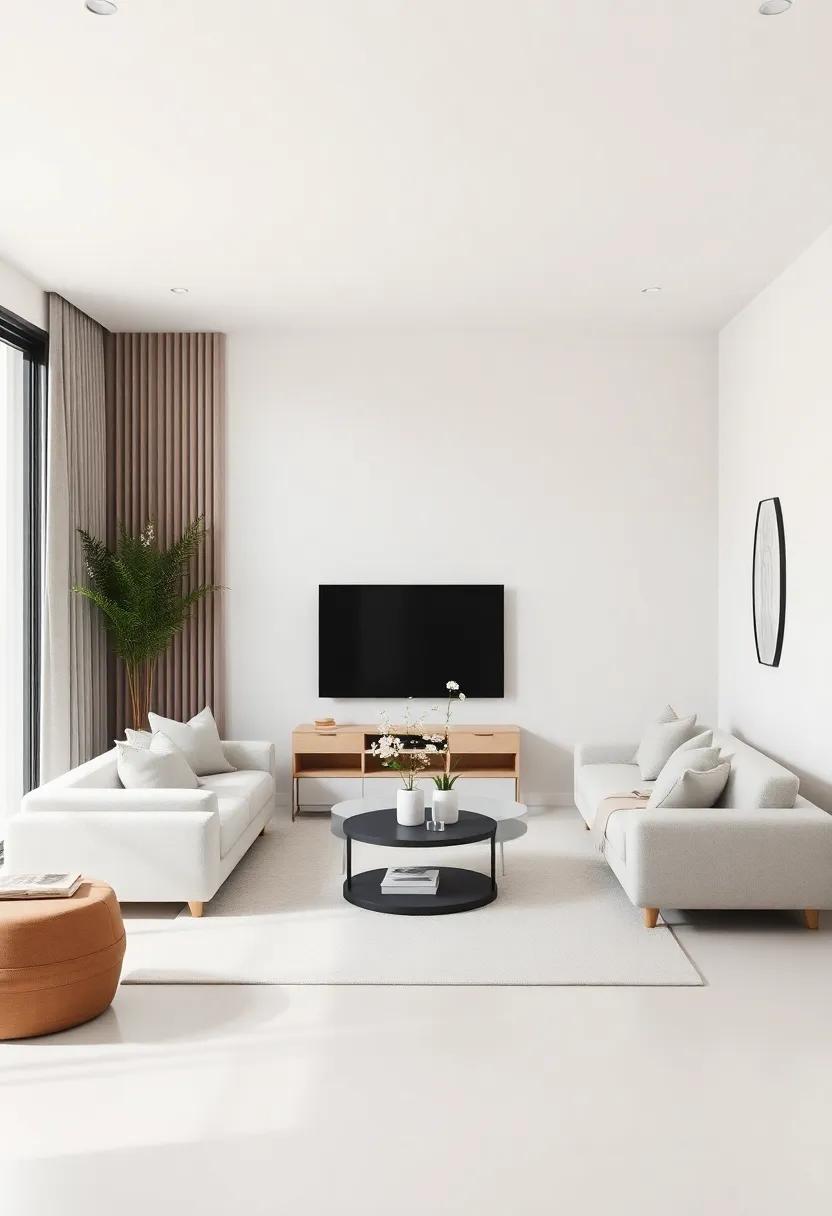
Soft fabrics play a pivotal role in transforming a small living room into a tranquil oasis.The gentle texture of materials like cotton, linen, and velvet invites comfort and relaxation, making them perfect for cushions, throws, and curtains. When selecting fabrics, consider a color palette that promotes serenity—think muted pastels or earthy tones that blend seamlessly with the minimalist design. Layering fabrics can add depth without clutter, allowing for visual interest while maintaining an airy feel. You might opt for:
- Lightweight drapes that filter natural light
- Textured throw blankets for added warmth and style
- Plush area rugs that define spaces and improve acoustics
Incorporating subtle design elements further enhances the calming atmosphere. Choose furniture with clean lines and organic shapes, allowing each piece to breathe and create spatial harmony. you can enhance the ambiance by arranging plants and soft lighting strategically; a well-placed lamp or a candle can create a cozy glow that softly frames the space. For a cohesive look, consider a simple layout, such as:
| Element | Description |
|---|---|
| Textiles | Choose soft, muted fabrics for upholstery and decor |
| Shapes | Opt for rounded furniture to soften corners |
| Lighting | Utilize ambient lighting to create a soothing environment |
Streamlined Design: Choosing Essential Accessories for a minimalist Feel
To achieve a minimalist aesthetic in your small living room, focus on selecting accessories that are practical yet stylish. Less is more should be your guiding principle. Choose a few key pieces that serve dual purposes,such as a sleek coffee table that also provides storage. Opt for a few well-placed decor items like a statement vase or abstract artwork, which can become the focal points without overwhelming the space. Remember, each accessory should contribute to the overall harmony and functionality of the room.
When it comes to color and material choices, stick to a cohesive palette that promotes a sense of calm. Neutral tones, such as whites, beiges, and cool grays, can make the space feel larger and more inviting. Consider materials like natural wood, metal accents, or soft textiles that maintain a lightweight visual impact. Here’s a quick reference table to help you select the right accessories:
| Accessory Type | Function | Material |
|---|---|---|
| Coffee Table | Storage & Surface | Wood/Metal |
| Throw Pillows | Comfort | Fabric |
| Wall Art | Aesthetic | Canvas/Print |
| Lighting | Ambiance | Metal/Glass |
Adapting Layouts for Flow and Accessibility in Compact Environments
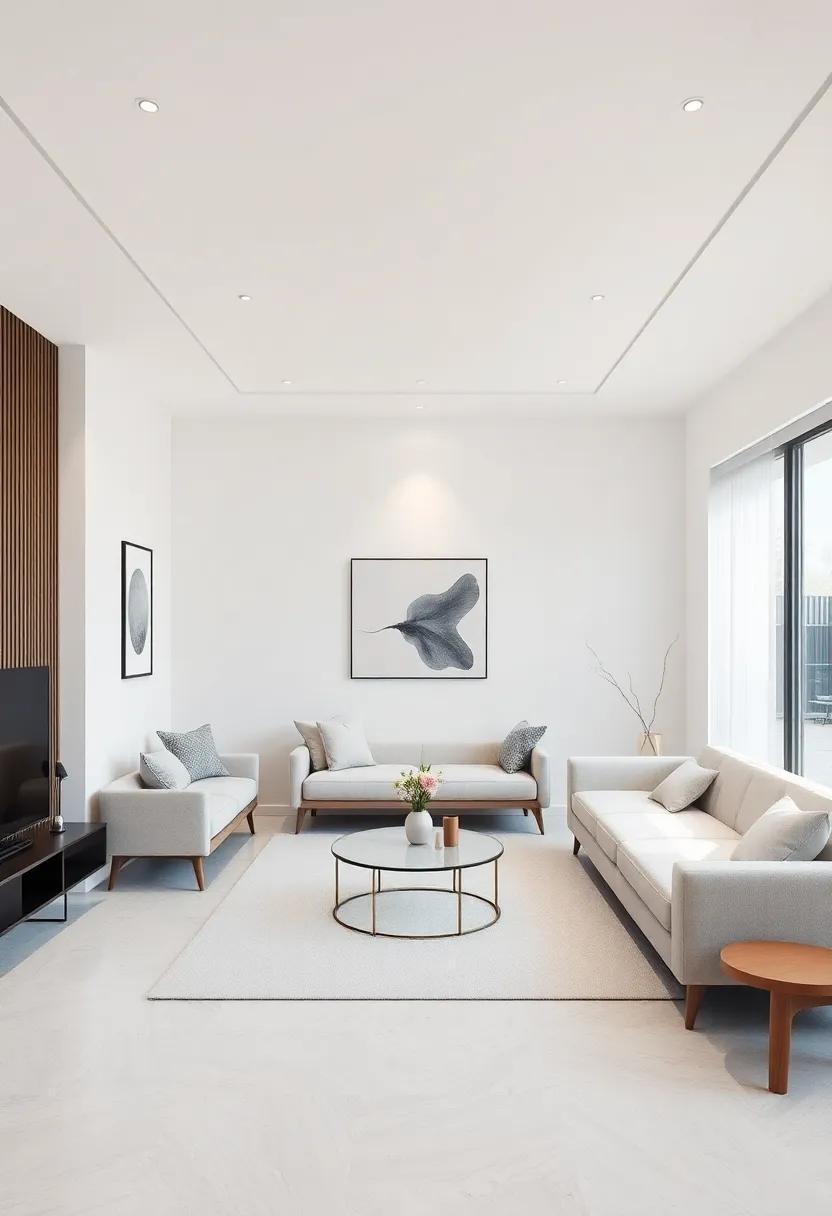
When designing a compact living room, it becomes essential to prioritize both flow and accessibility without sacrificing style. To achieve this,consider implementing a multi-functional layout that accommodates various activities while maintaining an open and inviting atmosphere. Use furniture that serves dual purposes, such as a coffee table that doubles as storage, or a sofa bed that provides seating by day and a sleeping space by night. This allows you to maximize the use of available square footage while ensuring that pathways remain clear for easy movement,ultimately creating a seamless transition between different zones of the room.
Incorporating accessible design elements is equally important for enhancing comfort and usability. Opt for furniture with rounded edges to prevent accidents in tighter spaces and ensure that furniture placement encourages interaction. Implement vertical storage solutions, like wall shelves or built-in cabinetry, to keep the floor area open and uncluttered. additionally, consider a color palette that promotes a sense of spaciousness; light colors can make a small room feel larger and more airy. A thoughtful selection of decor items, such as mirrors that reflect light, can also enhance the overall sense of flow and openness.
| Design Element | Function |
|---|---|
| Multi-functional Sofa | Seating + Sleeping space |
| Storage ottoman | Seating + Hidden storage |
| Wall Shelves | Vertical Storage + Display |
The Influence of Art and Decor in Defining a minimalist Aesthetic
In a minimalist living room, art and decor serve as powerful tools to enhance the overall aesthetic while maintaining simplicity and elegance. The choice of artwork can create a focal point without overwhelming the space, guiding the eye around the room and providing a sense of serenity. Incorporating pieces that are rich in meaning yet simple in design can elevate the space, allowing them to communicate a personal narrative without cluttering the environment. Consider curated collections of prints, abstract pieces, or even local artisan crafts that reflect the inhabitants’ stories while seamlessly blending into the minimalist ethos.
Moreover, the strategic selection of decor items further strengthens the minimalist aesthetic. Utilizing a limited palette of colors and textures can harmonize different elements in the room. Key components include:
- Functional Furniture: Opt for pieces that serve a dual purpose, such as ottomans with storage.
- Natural Elements: introduce plants that add life and warmth while remaining unobtrusive.
- Textiles: Use soft furnishings like throws or cushions sparingly, focusing on quality over quantity.
For those looking to create a visually appealing balance, a simple table can highlight how different decorative approaches can coexist within minimalist philosophy:
| Decor Element | Purpose | Example |
|---|---|---|
| Artwork | Visual interest | Large canvas with muted colors |
| Plants | Adds warmth | Single, tall indoor plant |
| Lighting | Creates ambiance | Simple floor lamp |
Exploring Color and Light Dynamics to Breathe Life Into Smaller Spaces
In the realm of small living space design, the interplay of color and light can transform an ordinary room into a vibrant sanctuary. By carefully selecting hues that reflect and amplify natural light, you can create an illusion of spaciousness and warmth. Embrace a palette dominated by soft neutrals—think warm whites, gentle greys, and muted pastels—enhanced by strategically placed accents from bolder shades. Adding mirrors and reflective surfaces can serve to bounce light around the room, enriching the ambiance while together expanding the perceived dimensions of your living area.
Lighting design is equally paramount in crafting a lively atmosphere.Layered lighting schemes incorporating ambient, task, and accent lights can highlight architectural features and create zones within your space without overcrowding. Consider these essential elements:
- Soft overhead fixtures: Choose pendant lights or chandeliers that draw the eye upward.
- Functional task lighting: Use adjustable table lamps or wall-mounted sconces to illuminate work areas.
- Accent lighting: Highlight art pieces or architectural elements with strategically placed spotlights.
By harmonizing color with innovative lighting, you not only enhance the aesthetic appeal but also cultivate an inviting environment that feels expansive and alive.
Transforming Small Living Areas with Reflective Surfaces and Light Colors
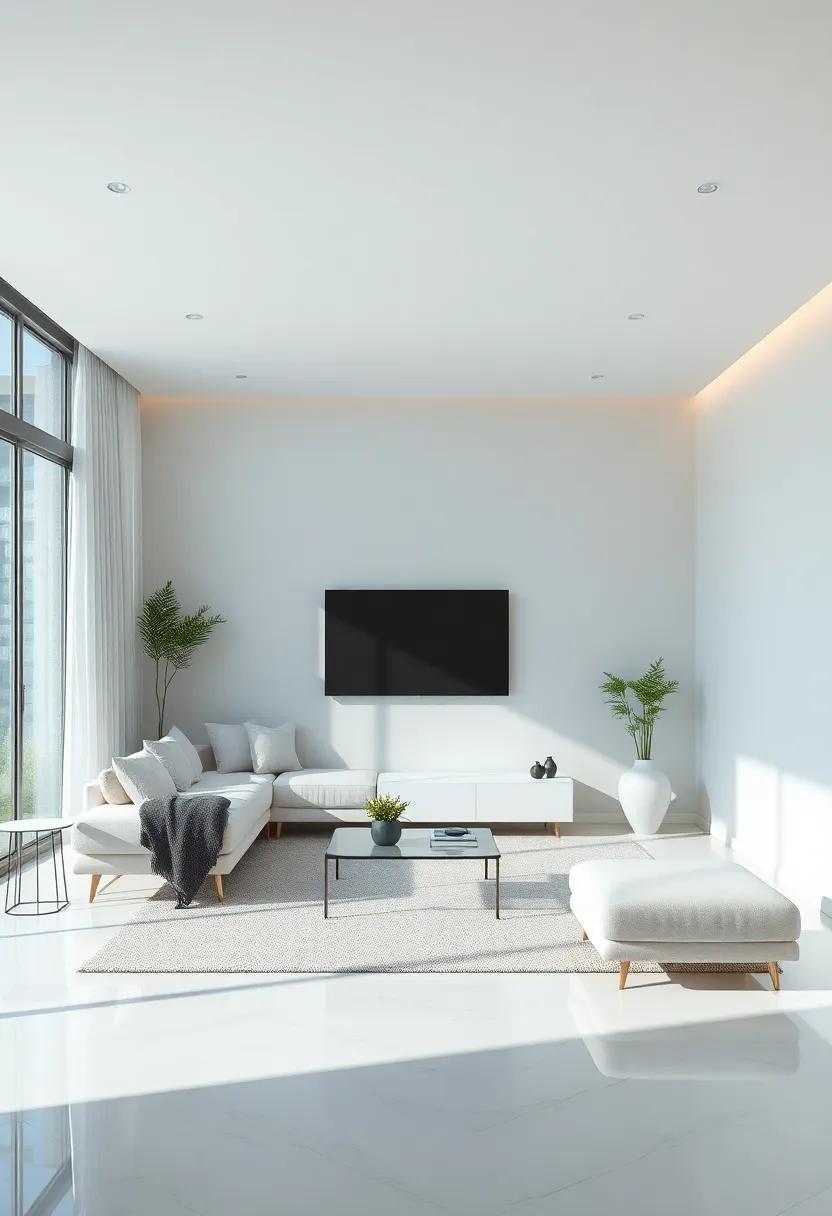
Utilizing reflective surfaces is a game changer when it comes to enhancing the perception of space in small living rooms. Mirrors, glass, and shiny metallic accents can play a crucial role in creating an illusion of depth and brightness. By strategically positioning mirrors across from windows or light sources, you can amplify natural light, making the room feel more expansive. Consider incorporating reflective elements like:
- Glass coffee tables for a sleek look
- Mirrored furniture to add visual interest
- Decorative wall mirrors to create focal points
Light colors are equally effective in transforming small spaces. Shades like pastels, soft whites, and airy grays can open up a room and imbue it with a sense of tranquility. Pairing these hues with a few vibrant accents can evoke a fresh and lively atmosphere without overwhelming the senses. When designing your space, explore the following combinations:
| Color Scheme | Recommended Accent Colors |
|---|---|
| Soft Blue & White | Coral or Orange |
| Pale Gray & Cream | mustard Yellow |
| Mint Green & Light Beige | Charcoal Gray |
Innovative Ideas for Integrating Technology into a Minimalist Design
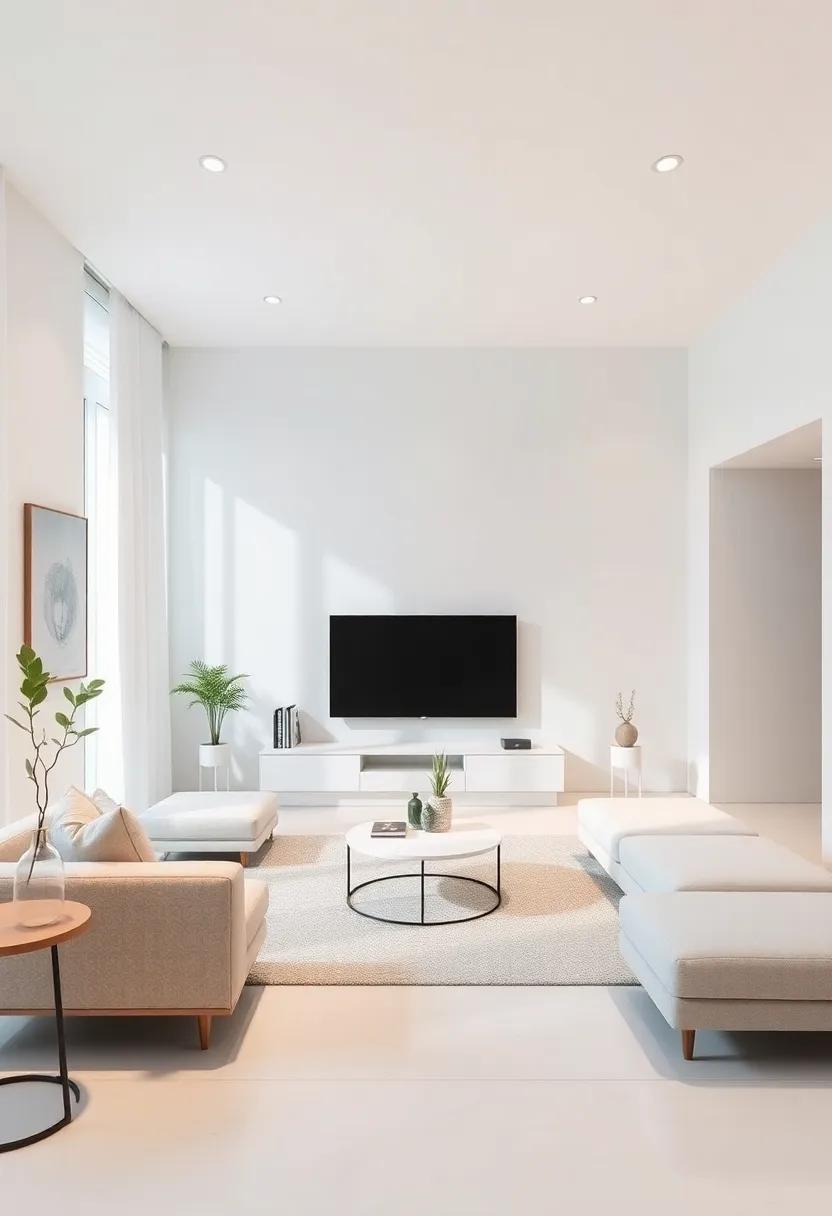
Incorporating technology into a minimalist design can enhance functionality without cluttering the visual space. Consider installing a smart lighting system that adjusts brightness and color temperature based on the time of day, promoting both ambiance and energy efficiency. Use sleek, wall-mounted smart speakers that not only save floor space but also blend seamlessly into the decor. The integration of hidden charging stations, like those built into furniture or wall panels, eliminates the need for visible cords, contributing to an uncluttered aesthetic.
additionally, employ modular furniture equipped with tech-friendly features. For example, a coffee table with built-in wireless charging pads not only serves a practical purpose but also maintains the clean lines typical of minimalist design. Use a digital art frame that rotates through curated art pieces or personal photos, allowing for dynamic decor changes without altering physical items in your space. A well-thought-out layout can transform the living room into a multifunctional area, making it suitable for both relaxation and work with minimal disruption to the serene environment.
curating a Gallery Wall That Tells Your Story Without Clutter
Creating a gallery wall that truly reflects your personality can be a delightful yet daunting task, especially in a compact space. To avoid overwhelming your room, opt for a cohesive color palette that ties your chosen pieces together, ensuring they complement rather than compete with each other. You might consider elements such as:
- Framed photography capturing special moments.
- Art prints in shades that resonate with your decor.
- Textiles or fabric pieces for texture and depth.
- Personal mementos that evoke meaningful memories.
Additionally, it’s important to strategize the layout of your wall to maintain a clean and organized appearance.A grid or asymmetrical pattern can create a balanced but striking display. Using floating shelves or ledge systems allows for versatility, letting you change out pieces easily. To elevate the look, utilize negative space effectively by leaving blank areas to breathe, allowing each piece to stand out without feeling cluttered. consider the following layout tips:
- Group items by size or style for harmony.
- Vary frame styles but maintain a consistent theme.
- Incorporate greenery for liveliness and contrast.
In Summary
As we step back and appreciate the art of small living spaces, it becomes clear that embracing a minimalist approach can transform even the coziest of rooms into functional havens of style.By thoughtfully choosing each piece and maximizing every square inch, we can create environments that not only meet our needs but also reflect our personal aesthetics. The journey through innovative design strategies—be it through multifunctional furniture, strategic color palettes, or clever storage solutions—underscores the boundless possibilities that a small living room offers. Ultimately, it’s about finding balance: a harmonious blend of form and function that elevates our everyday experiences. So, as you embark on your own design adventure, remember that space is not just a measurement but a canvas awaiting your unique vision. Embrace it, and let your small living room tell your story.
As an Amazon Associate I earn from qualifying purchases.
